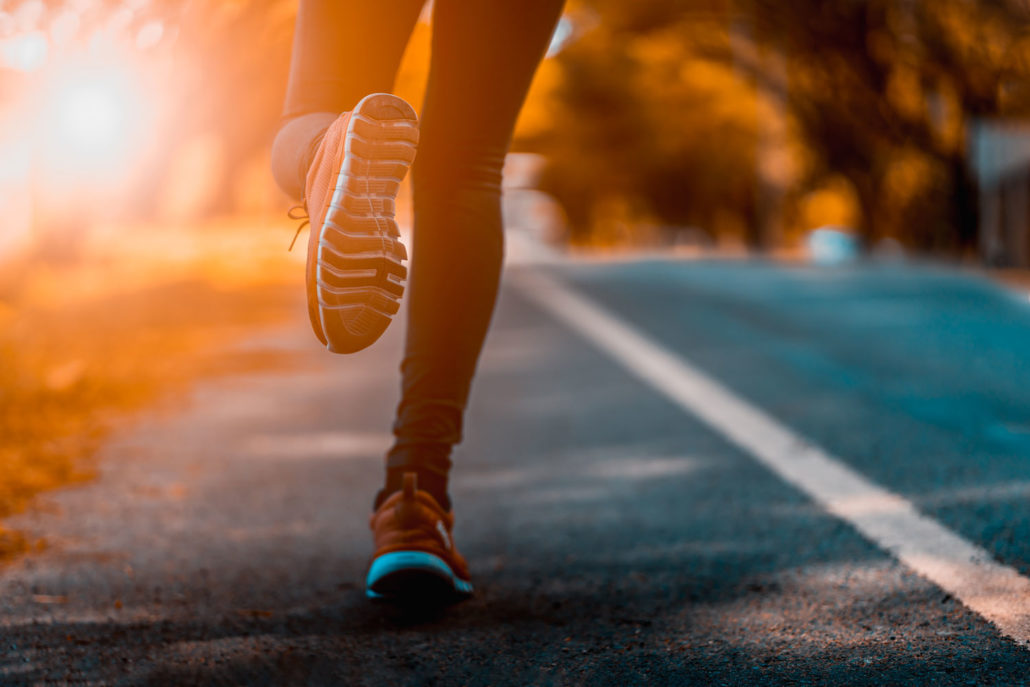Breaking Points

I have run with an orthotic for most of my running life. There was definitely some trial and error in the beginning, but the end conclusion was clear- If I wanted to push 100 mile weeks and train hard, then I was going to need something. And, as of writing this, I am on track to put in my 100,000th mile somewhere around the end of June, 2021. Now, to pull back from that view a little bit, let’s be clear. I have had custom orthotics that were terrible and some OTC orthotics that I rocked several thousand miles on without issue.
My winning combo is/was the Brooks Adrenaline (Ghost GTS now?) or the Ravenna and a semi-rigid insole or custom orthotic. I’d wear these for all my easy runs and long runs. For my workouts, I’d rarely ever wear an orthotic, and usually flats. Even during track, I didn’t wear spikes very much. I’d race in the same flats and now the super shoes. That combo has allowed me to push my body to the max, with relatively few major setbacks and that’s at peaks of 140 plus miles during the heaviest training.
That’s my point with this opening. We all have breaking points. When I was a newer runner, I didn’t have a lot of guidance. My track coach was the freshman football coach and hadn’t run over a mile since he left the Navy 35 years prior. He’s a great guy, he just wasn’t equipped to help me much. I grew up in a town of fewer than 1000 people it before the internet was really a thing. Heck, I didn’t even have cable! I was on my own! But, over the years, I learned through the trials and then meeting more and more people who offered sound advice. I gradually figured out where the line was before my body began to break down. Now, whether, or not, I listened to that is another story.
Then, about two weeks ago, I realize I had forgotten about all I had learned over the years and went past that breaking point threshold on my body. I guess I just got lazy and stopped putting my inserts in my shoes. I was trying to preserve shoes and probably stretched them a little thin. Then, there’s the fact that we finally got hit with the snow and ice, which made footing tough. I started ramping up the volume during this perfect storm to start my prep for a May marathon. By themselves, none of these things were crazy by themselves but added together, it was too much. I know better than biomechanically it was a lot to ask from my middle-aged body.
As I write this, I have changed my shoes, put my inserts back in, the snow has melted and while not training hard, my runs are trending in the right direction. 10 days later and I am probably 60-70% better. My brain lapse will end up costing me a few weeks, but in the end, my race got postponed until the fall, so it ended up being a wash…
Besides my own situation, I had a culmination of years of injury add up with one of my athletes. I have been working with her for about a year, but we couldn’t ever get her volume past 35 miles per week for more than a few weeks. We’d get there ok, but within a few weeks, something would flare up and it was right back to fewer days and reduced volume. So, we laid it all out there and I think we finally figured out a big chunk of what happened. In a nutshell:
- In 2011, she broke her femur. This was the height of the zero drop, minimalist, barefoot movement and her orthopedic said that if she wanted to run anything, she’d have to go that route. Unfortunately, she was coming from a motion control shoe and the advice stopped at just switching the shoes.
- She returned to running but was lower volume. Able to run a marathon, but not performance-minded. Probably kept her under that breaking point for a number of years.
- A few years later, she had her daughter and shifted her mindset to be more performance-minded. This is where her troubles started. While staying in the same shoes, she now trained longer and faster on a different body which set into motion a never-ending cycle of recurring injury.
We mainly discussed that major swing in the spectrum of shoes, from a big heel drop and stable shoe to the complete opposite- a zero drop and highly flexible shoe. For one, there was no real transition to allow the body to adjust. Plus, it was probably just plain old overkill. If you follow the footwear trend, you see most shoes have settled somewhere around the 6 mm drop, a happy medium. Needless to say, we found that 35 miles were her breaking point under those conditions.
So what are we doing? Well, we had worked on strength and mobility which gave us a little progress, but ultimately I feel like the biggest thing holding her back right now is the shoes and she agrees with me. So, we sought out some shoes in the 4-6 mm range and are integrating them now. We’ll keep up the strength and mobility while gradually introducing slight increases in volume. If that works ok, we’ll start adding the intensity back in.
What I really want you to take from this:
- We all have breaking points and it is up to us to figure out what they are. If you are a newer runner, it’s some trial and error, but learn from those errors so you don’t keep making those same mistakes. This drastically shortens your learning curve.
- Good notes are key. Many of my athletes just sync their data to Garmin or Strava and call it a day. Dive deep into notes when the time calls for it. Not every day needs a paragraph but when things are really high or low, note what’s going on. Keep track of mileage on shoes and inserts. Things like that.
- Avoid extreme changes in gear. My athlete was given poor advice (in my opinion) and it cost her a lot of time and effort. Trends are easy to latch on to, but if it’s a complete 180 from what you have been doing, make sure you are getting sound advice from someone trusted and then maybe even a few other trusted sources.
- In my case, I have to limit factors that are not going to change for the better after 100k miles. Respect those limitations if you are not going to work on them. In my case, I strengthen and work on mobility, but physically there are still some limitations. If I do the work and wear the right gear, I can push right up to that line and even dip over it for a few weeks if I have to. If I don’t do those things, well, it’s an injury and it’s my own fault.
If you can take these lessons to heart, I think you can find enjoyment in testing that threshold of breaking down and even learn how to extend that threshold point out over time. If you can, that’s where self-growth and performance really start to breakthrough. At the very least, can keep you healthy and consistent in your training without unnecessary breakdowns. Thanks for reading and make sure you join our FREE training community.




